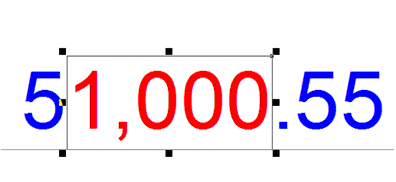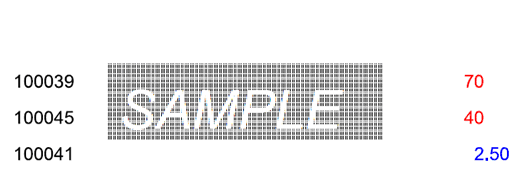|
This
question comes up occasionally, particularly with ERP systems where the
excess
decimals are there to cover all bases and are rarely used by most of
the
FormTrap customers. This
particular data
file has four decimals of quantity.
Most
quantity data is whole numbers, with the bulk of the remainder having
two or
less decimals. Four
decimals occurs usually
where the quantity involves "1/3rd" and "2/3rd" type values
where expression in decimal is recurring and the additional precision
is not useful.

This example form prints the detail lines only, showing whole numbers
without decimals, and decimals to their last non-zero digit (the better
alternative is to round to two decimals).
This is how you do it:
- Define three fields:
Entire
field
Decimal portion only (incl. the decimal point)
Whole Number portion only
- Make your value in the Definition Tab
over 1,000 so we can align with the next field (in red in the example).
Use
conditional printing to print Whole Numbers, aligned right.
The Print Test is Decimal Portion Equal to (text) ".0000".
Masking for this is Amount/Numeric.
- Make your value (Definition tab) a number
that includes the same value as the above for alignment (blue in the
example).
Use
conditional printing to print the entire field, aligned
decimal. The Print Test is Decimal Portion Not Equal to
(text) ".0000".
Masking is "Custom", and comprises a field of the same length as the
original, ie 14 underscores, with two trailing decimal positions masked
right, thousand separator commas inserted for alignment, and the first
8 underscores masked left (this leaves "0.12 as the minimum value
printed).
(Alternative is to use Amount/Numeric and define the field as "Use
input separator", with two output decimals which rounds the decimal
portion).
- Finally and at high magnification, align
the whole numbers on top of each other, using the arrow keys and Nudge
distance of 1 for final alignment.

A PDF from the example form and data file shows below:

This question was put by Scholle Corporation who uses FormTrap
globally and have policy decisions on "rationalization" of their
computer outputs - such as this one.
|
|


